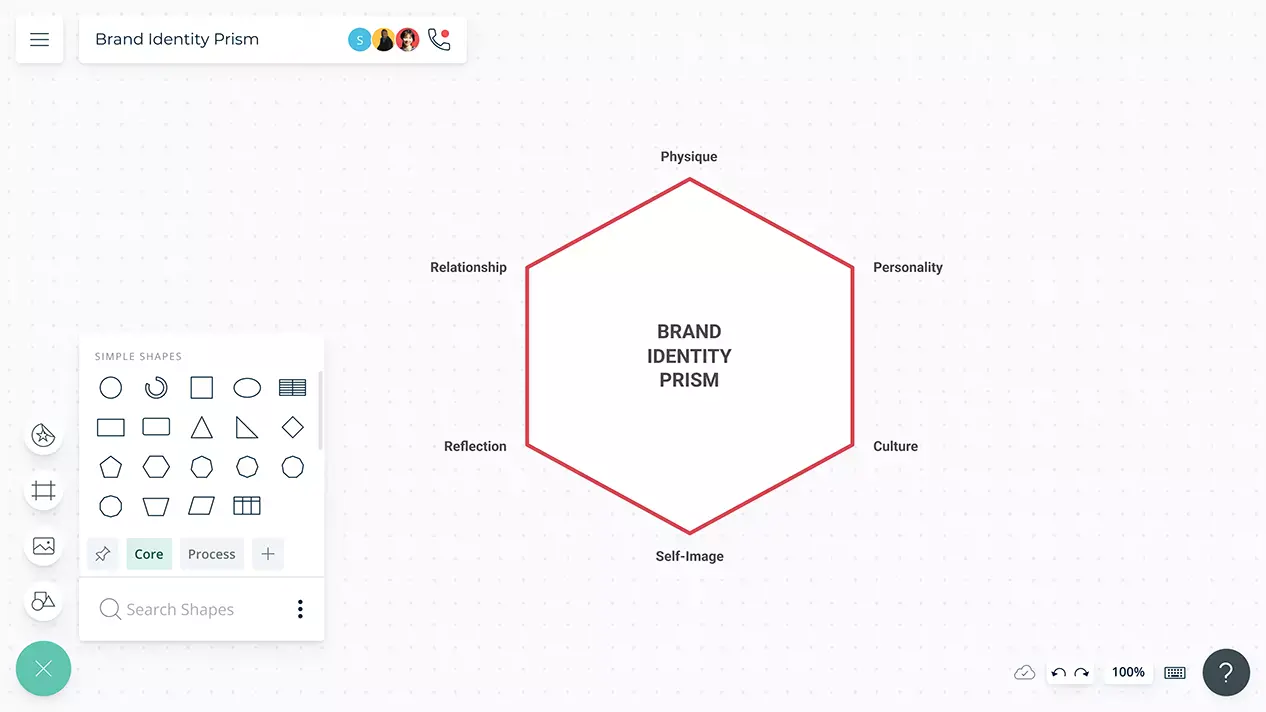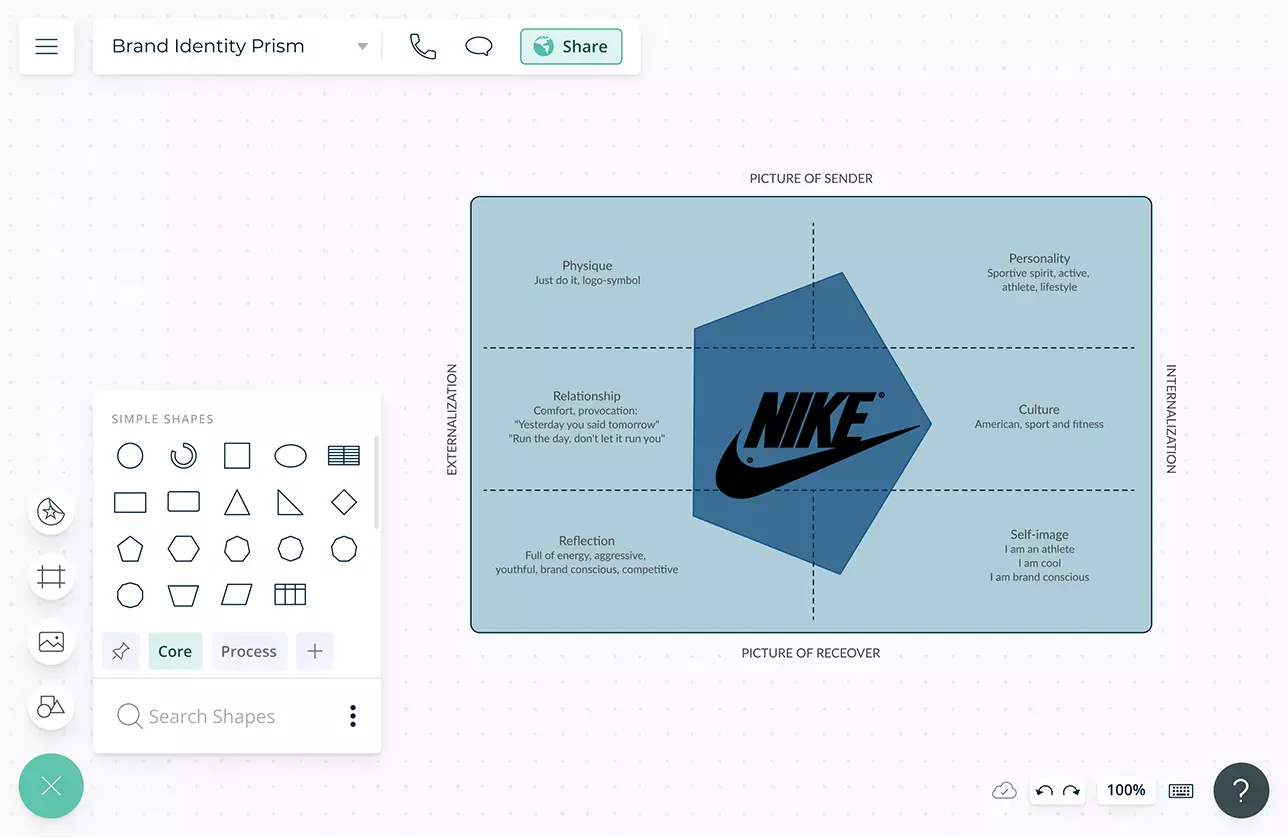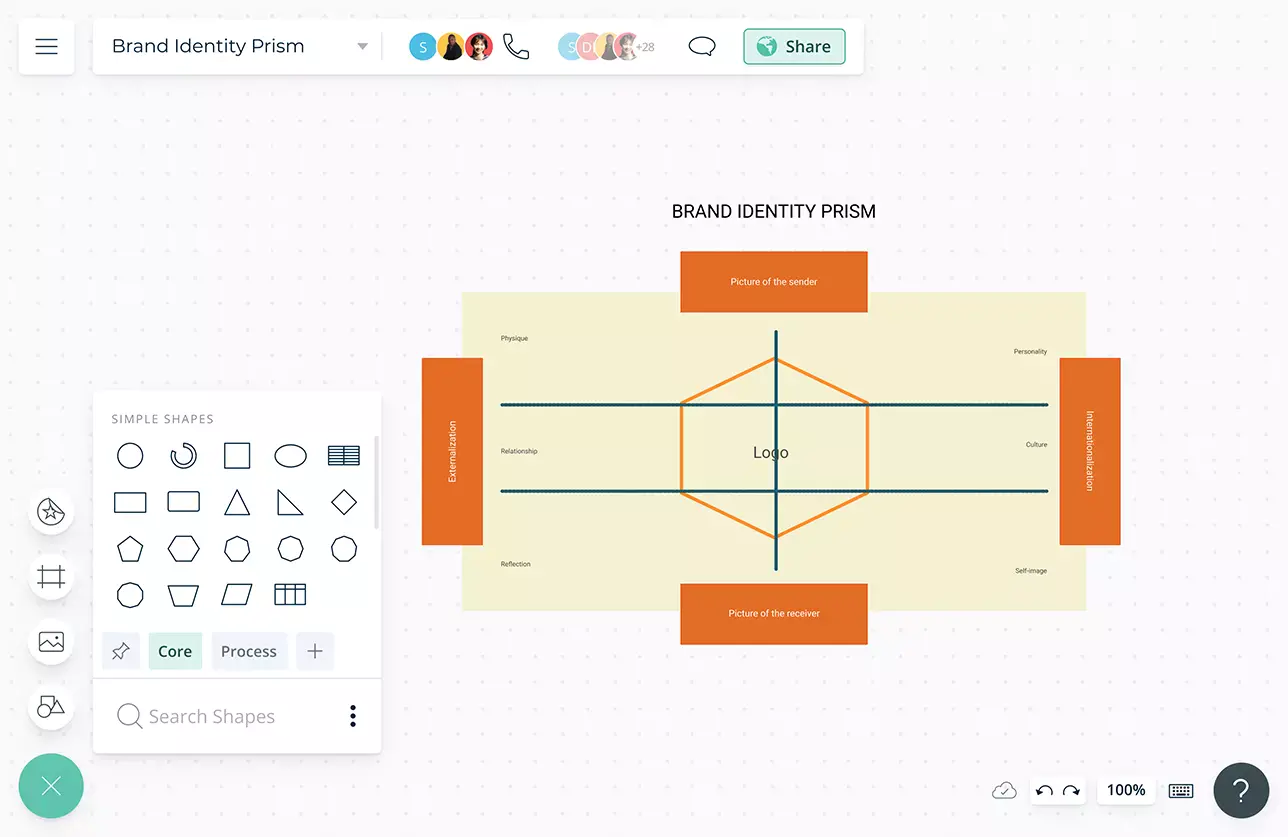Brand Identity Prism Template
Build Stronger Brands
Collaborate around clarifying your brand identity and building a brand image that resonates well with your customers.
- A single canvas to map elements of the brand & capture insights
- Real-time collaboration to work with colleagues and stakeholders
- Multiple pre-made templates and frameworks for brand development

- A single canvas to map elements of the brand & capture insights
- Real-time collaboration to work with colleagues and stakeholders
- Multiple pre-made templates and frameworks for brand development


Design Exceptional Brand Experiences

Infinite canvas to centralize and organize all communications and information around the brand.
Bring research data and information from any external source to visualize on the canvas as meaningful data shapes for easier analysis.
Add detailed docs, attachments, links and more via the notes feature on each item to capture details and the big picture in a single space.
Built-in presentation tools to organize your brand strategies and share your insight with the rest of the team instantly.
Bring the Best Ideas Out

Brainstorming tools like mind maps or post-it note walls to get the best ideas out.
Real-time virtual whiteboard with powerful diagramming tools to conduct structured meetings and discussions remotely.
Multiple strategy frameworks and templates to develop your brand.
Prioritization grids to visually rank ideas for effort and impact, and plan and assign tasks.


Keep Everyone and Everything in Sync

Built-in video conferencing to get instant feedback virtually from anywhere.
Real-time cursors for any number of participants. Collaborate with team members on a shared canvas.
Use @mention comments to direct people to get things done or clarify things and comment threads to have discussions and follow-ups on the same canvas.
Multiple access levels and roles to streamline managing, sharing, editing, and reviewing company brand strategies.
What Is the Brand Identity Prism?
The Brand Identity Prism is a model developed by French marketing expert Jean-Noël Kapferer. It serves as a framework for defining and understanding the holistic identity of a brand. The prism consists of six facets, each representing a different dimension of the brand. These facets collectively contribute to shaping how a brand is perceived by both internal and external stakeholders. Here are the six facets of the Brand Identity Prism:
Physique:
This represents the tangible, physical aspects of the brand. It includes the visual elements such as logo, design, packaging, and product appearance. Physique is the visual representation of the brand that consumers can see and touch.Personality:
Personality attributes define the human characteristics and traits associated with the brand. Is the brand perceived as sincere, exciting, competent, rugged, or sophisticated? Establishing a brand personality helps in creating a relatable and consistent image.Culture:
Culture refers to the core values, beliefs, and principles that the brand embodies. It reflects the deeper meaning and purpose of the brand beyond its products or services. A brand’s culture influences its decision-making and actions.Relationship:
This facet focuses on the type of relationship the brand wants to establish with its customers. It involves understanding how the brand interacts with its audience and the emotional connection it aims to foster. The goal is to build a meaningful and lasting relationship with customers.Reflection:
Reflection considers how the brand reflects the self-image or aspirations of its target audience. It explores the customer’s perception of themselves when associated with the brand. This facet helps in understanding the alignment between the brand and its customers’ values.Self-Image:
Self-Image relates to the ideal customer or consumer that the brand targets. It involves understanding the customer’s desires, aspirations, and how they perceive themselves. The brand aims to appeal to this idealized self-image through its marketing and positioning strategies.
How to Use the Brand Identity Prism?
Gather Stakeholder Input: Involve key stakeholders, including employees, customers, and leaders, in discussions about the brand.
Research and Analysis: Conduct market research to understand customer perceptions and competitor positioning.
Facilitated Workshops: Organize workshops or brainstorming sessions to collaboratively define each facet of the prism.
Identify Brand Traits - Define the fundamental characteristics and attributes of your brand. Consider aspects such as personality, values, and culture.
Determine Brand Values - Clearly outline the core values that your brand adheres to. These values represent the principles and beliefs that guide your brand’s behavior.
Define Brand Story: - Write a compelling narrative that tells the story of your brand. This includes the brand’s history, mission, and vision
Visual Elements and Design: - Consider the visual aspects of your brand, including the logo, color palette, typography, and imagery.
Communicate Guidelines - Create guidelines for how your brand communicates with its audience. This includes the tone of voice, language style, and messaging strategy.
Visual Representation: Create a visual representation of the Brand Identity Prism, either through diagrams, charts, or multimedia presentations.
Iterative Refinement: Review and refine the Brand Identity Prism iteratively, considering feedback and evolving market dynamics